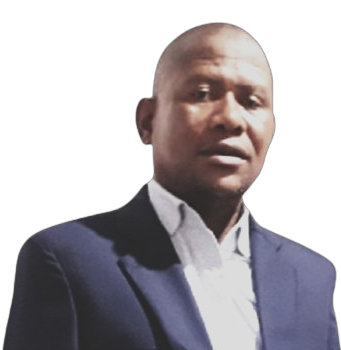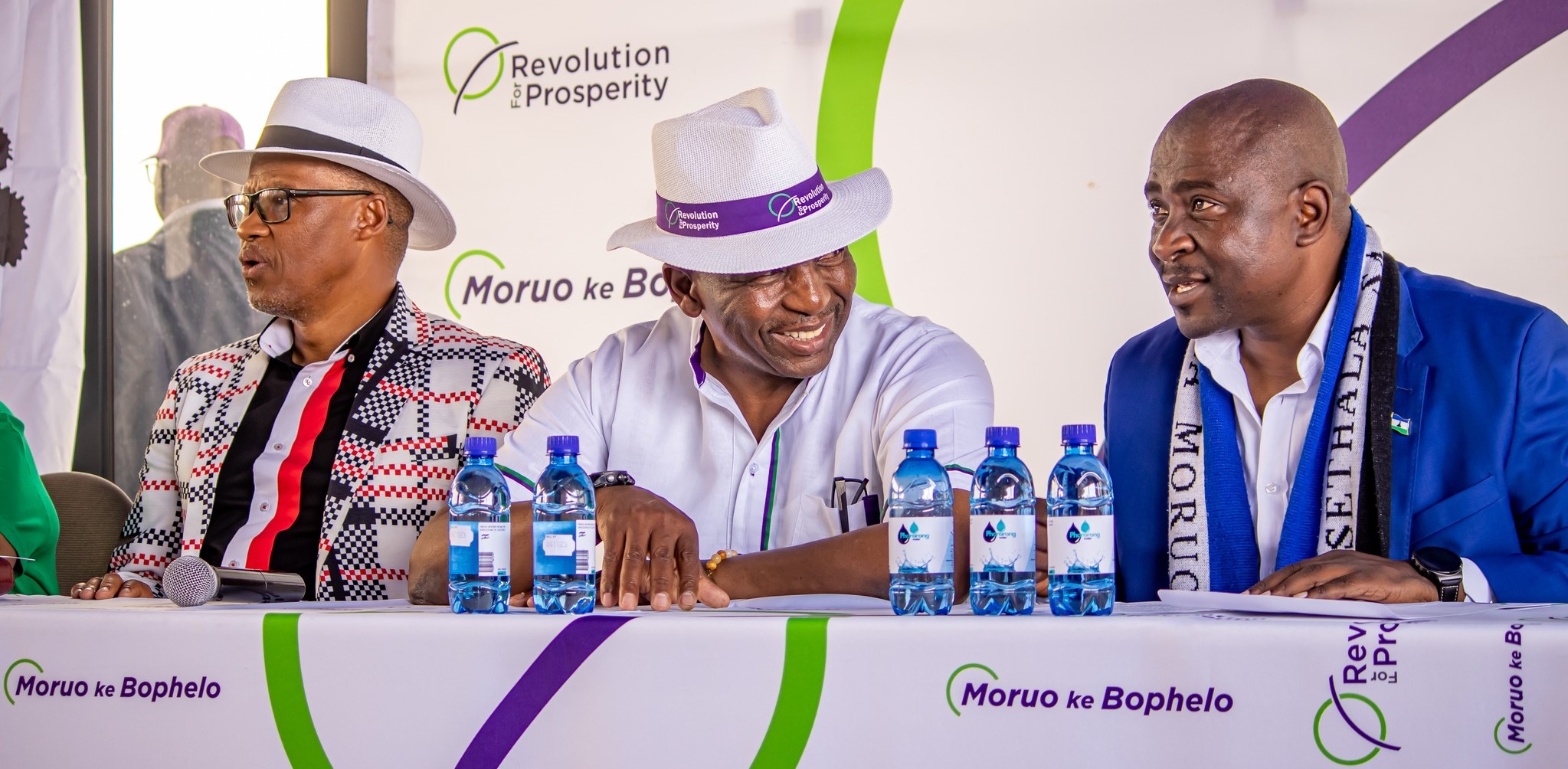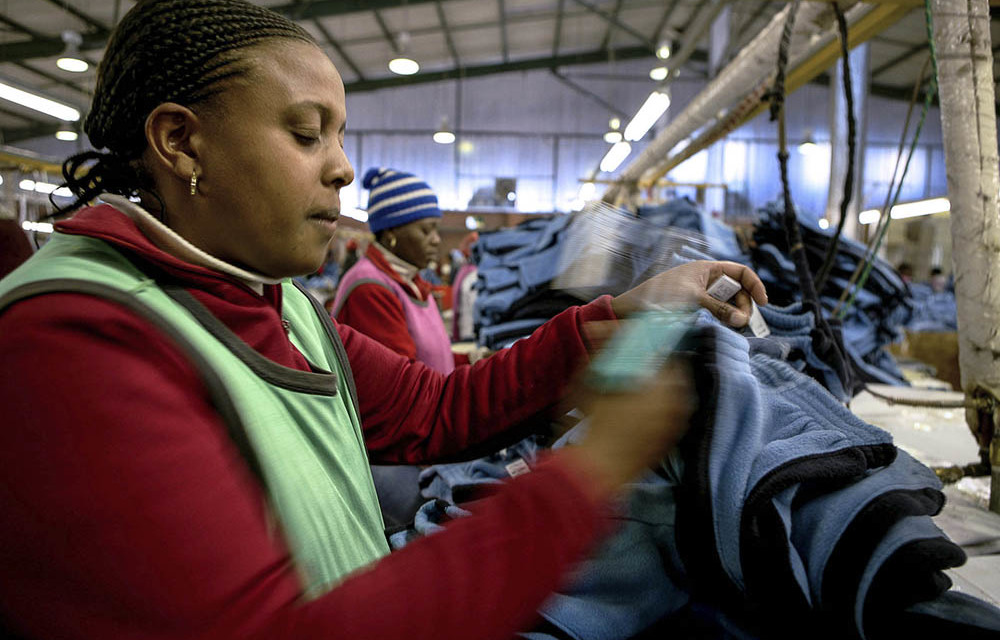Reforms propose conflict resolution mechanism in Lesotho

Mr Mzimkhulu Sithetho
Managing Director of the Governance Institute for Sustainable Development and Editor-In-Chief of thizkingdom.com

Lesotho as a constitutional monarchy
Lesotho is one of the few remaining monarchies in Africa, which lies right at the belly of a powerful economy, South Africa. Since Lesotho attained political independence from the Great Britain in October 1966, the Kingdom has traversed a not-so-palatable political journey in the last five decades. Its political trajectory has been punctuated by a series of nasty political episodes, which have adversely affected the small country's efforts to consolidate democracy.
Lesotho has been stuck with the project of democratization since attaining political independence from the Great Britain, more than five decades ago. One of the major stumbling blocks to the Kingdom's consolidation of democracy is attributed to a weak state. Democratization is thrust in the strength of a state in that it is those states that are still crawling on the floor that face a hurdle in their efforts to democratize.
In an effort to arrest the disunity and lack of social cohesion among the various shades of society, Lesotho has embarked on reforms, which have however yielded little. However, there seems to be polarization and lack of unison among players in the reform process, with juxtaposition between ruling and opposition parties. Basotho have not been rallied to support the reforms.
Part of the problem to the historic lack of social cohesion among Basotho has been the army, which has consistently refused to submit to civilian authority. This has been a ticking-time bomb for Lesotho's fledgling peace architecture and the directionless democratization project. The army's involvement in politics is traced to the 1970s.
1965 elections and the post-independence era
The period immediately after the 1965 election, which was pre and after attainment of independence was a period of fragile democracy. This period was characterized by a state that was trying to find its way with little experience of holding public office, especially after taking reins from a colonial regime. This five-year period since independence (1965-1970) marked the first transition to democracy and the establishment of the country's political and economic architecture. It was also a period of establishing a solid social and socio-political infrastructure as well as many other national shades, which are required for a country to qualify as a sovereign state. It was not an easy period for the Basotho National Party (BNP)-led government, which did not command a grand majority in parliament as a ruling party. However, it sailed through to the next election, held in 1970.
De-facto one-party state, declaration of state of emergency (1970-1986)
Lesotho went for its second election from independence in 1970, which was marred by suspicions of vote-rigging and a subsequent state of emergency, which was declared by the then Prime Minister, Dr Leabua Jonathan. He had refused to relinquish power to would-be successor, Dr Ntsu Mokhehle following a successful performance of the latter in the poll. Dr Mokhehle, had led the then major opposition in parliament, (BCP).
BNP got a disappointing 23 seats against 36 of BCP and decided to cling to power after Dr Jonathan declared a state of emergency. This saw opposition leaders fleeing the country to seek refuge in Botswana and other Southern African countries. This period spelled the last nail on the coffin of building a democracy in Lesotho. The leader of the BNP and prime minister who had lost the 1970 elections suspended the constitution after declaring a state of emergency. The spell led to a one-party state since 1970-1986, with Dr Jonathan ruling the country by an iron-fist for 16 years until he was deposed by a military coup in January 1986. Political pundits strongly believe that the episode of BNP's undemocratic stint on power since 1970-1986 and its subsequent seven-year military junta (1986-1993) have had a devastating effect on the democratization efforts of Lesotho.
Military junta, seizure of power by the barrel of a gun (1986-1993)
The army ruled the country for seven years after seizing power by a barrel of a gun in 1986. This had ended a 15-year stint of undemocratic rule and a one-party state under the BNP as mentioned. The military junta was led by Major-General Justin Metsing Lekhanya who became Chairperson of the Military Council and the Ministers' Council. This episode threw Basotho's hopes of entrenching democracy into oblivion. After the seven-year spell of undemocratic rule under the army, the Kingdom of Lesotho was pressured by the international community to make way for democratic rule.
Lesotho's submission to international pressure to embrace democracy was marked by the holding of democratic elections in what political commentators call 'the second wave of democracy' in March 1993. This was also not easy as many episodes took place between seizure of power by the army and the road to democratic elections. Some of the episodes include the return to self-exiled opposition leaders and the subsequent formation of a Constituent Assembly. The Assembly facilitated the crafting of a progressive constitution after it had been suspended by Dr Jonathan in 1970. These activities levelled the field for democratic rule to take place in Lesotho, at the genesis of the second wave of democracy.
Second wave of democracy, 23 years of political wilderness (1993-1998)
The period 1993-1998 was reintroduction of democratic rule since it had been dashed off by two undemocratic episodes of 1970-1986 and 1986-1993 as discussed earlier. This period (1993-1998) gave Basotho a modicum of hope as they expected their country to be a shining star in embracing democracy in the Southern African region. This was given the fact that Basotho had survived tribulations of a one-party state, where political activity was centralized and closely monitored. They also experienced a military rule, both of which were dictatorial and lacked public legitimacy, except that they were shoved down Basotho's throats. This was believed to be a lesson enough to change the tide and inspire political leaders to get things in order. Yet, it was not to be.
The military junta was a complete quashing of political activity (as exemplified by the Order No: 04, which abhorred political activity) and this meant Basotho had no legitimate voice. This was reason for high expectation, not only on democratic norms to be adhered to, but for democracy to translate into real development. But the period under discussion has been referred to as 'wasted time in the history of Lesotho' with no vision, no strategy to govern, no systems in place, but a complete mess of leaders full of revenge and self-aggrandizement at the expense of the highly expecting voters. The Basutoland Congress Party (BCP) clinched power in this second democratic election held in 1993, with a landslide victory. It clinched power after snatching all 65 constituencies and formed a government without opposition. However, the ruling BCP quickly descended into self-destruction with factionalism tearing the party into two main camps. There was a camp of those who aligned themselves with the founding leader, Dr Mokhehle and those proclaiming themselves as 'a progressive pressure group.' This led to a 1997 split, which further shattered many Basotho's hopes.
The re-entrenchment of democratic rule in 1993 had ended the 23 years of a country wallowing in political wilderness, while ushering hope among Basotho for a bright political future. The 1997 BCP split led to the formation of the Lesotho Congress for Democracy (LCD). This split was more like a sod-turning for more splits to come in the congress movement, as to-date, there are five parties which have broken away from the LCD. The BCP also went on a tearing binge with many splinters breaking away from the party, until today it is a political minnow.
Political pundits call the post-1993 era '˜Lesotho's return to democracy.' However, the inverse has been the case as democratic gains set in motion since the second wave of Lesotho's democratic dispensation in 1993 have been reversed. Basotho have failed to gain sustainable democratization of their country, with resultant economic gains that were expected to accrue from a democratic dispensation that was to follow.
Era of political turmoil in Lesotho, ushering in a self-reflection (1998-2002)
The LCD, which was a splinter group from the BCP as mentioned, contested the 1998 elections, just seven months from its formation in June 1997 and won 79 seats out of 80 and formed government alone. Irate elements within the opposition bloc took to streets and staged protracted night vigils at the Palace gates for three months. Instability settled in and this necessitated invitation of the Southern African Development Community (SADC) troops to dispel the belligerent army, which was at the coalface of the whole political impasse.
South Africa, jointly with Botswana, intervened militarily and diplomatically to quell Lesotho's political instability. The 1998 controversial poll led to the formation of an Interim Political Authority (IPA), which was made of parties that had contested the 1998 elections. The IPA was a diplomatic mechanism to quell irate opposition's anger and to chart the way forward using internal means. This partially worked for Lesotho, but was not sustained. The IPA model was decried in the ruling party-political circles, but became a darling of the opposition. The 1998-2002 period had seen transformation of the army to insulate it from active partisan politics by the Government. The Indian and Botswana armies played a major role of training the LDF.
Relative stable democracy after electoral reform (2002-2012)
The IPA marshalled a plan for adoption of a hybrid electoral model, the Mixed Member Proportional (MMP), which was first tested in the 2002 elections. It gave birth to a more representative and inclusive parliament since independence, with 10 political parties participating in the legislature. The MMP was an outcome of four years of consultation among fiercely warring factions of the 24 parties which had contested the abortive and conflict-ridden 1998 elections.
It follows therefore that such disenfranchisement of a sizeable proportion of the country's electorate by the electoral system in Lesotho effectively leads to their non-participation in the country's governance process. The consequence of this has been the widespread discontent and disillusionment of a large portion of the population, demonstrated by the protests that culminated in the 1998 political instability in Lesotho.
The IPA also marked the finding of soul among various political parties in the IPA. Though not a parallel parliament, the IPA was more vigorous in debates than the actual National Assembly, the latter, which was a bunch of LCD MPs who never debated any issues substantially and to a fruitful end. They were there by themselves with no opposition, except for intra-party conflicts, which ended in a split once more in 2001. This led to the formation of the Lesotho People's Congress (LPC), led by the then Deputy Prime Minister, Attorney Kelebone Maope. The splitting legacy continued, as bickering characterized congress parties.
The testing of the MMP in the 2002 elections was said to have ushered in a relatively stable and liberal democracy. The 2002 poll was the fourth since independence and the one that bred a most representative parliament of all the other three (1965, 1993 and 1998). Though the 2002 election was said to be without post-poll conflicts that had historically characterized most Lesotho post-election periods, there were pockets of disgruntlement from the BNP over the election outcome. The party threatened to withdraw from the multiparty parliament.
Efforts to deepen democracy through elections cannot be said to have been a symbol of democratic consolidation. The general acceptance of the new electoral model as inclusive and representative of all shades of political opinion has been one of the main achievements since 2002. Though there is consensus that the MMP was a way of deepening democracy and ensuring political legitimacy in Lesotho's democratization efforts, strides for building strong a peace architecture among Basotho is still far-fetched. There is still perennial conflict, which does not get resolved using local means until SADC intervenes to quell intra and inter party conflicts among Basotho.
Fragile state - introduction of coalition governments (2012-todate)
One of the benefits of the MMP electoral model is that its proportionality element has changed the political landscape of the country. Since 2012, there has not been a single political party that has won elections right away and forms government on its own. Parties have been forced by the electoral outcomes of no outright winner to forge alliances intended to garner enough seats in parliament that would allow them to form a coalition government. Also, no government has stayed its full tenure in office. The three that have been formed since 2012 have collapsed after hardly two years in power.
Conversely, political pundits have been of the view that voters have become winners as one, their political parties are bound by election outcomes to come together and so doing, partially uniting forces that never thought they would work together before. In the 2012 elections, arch-rivals LCD and BNP sat together in one table and formed a coalition government. Two, Basotho are now seen wearing more than one t-shirt and chanting more than one political slogan, a temporary unity indicator.
In 2014, hardly two years in power, the LCD/BNP/ABC coalition government collapsed after a feud erupted between ABC and LCD leaders, leading to a snap poll which was prematurely held in February 2015. This election bore no outright victor and led to formation of a second coalition government of seven parties, including those that never worked together before. This also gave credence to a quassi-unity among Basotho, which was brought about by the negotiation of electoral pacts and subsequent formation of a coalition government.
In some political parties' rallies, foes who never talked came and sit in one table. Also, the trend of coalitions has placed previously arrogant political leaders on their toes and to heed the call to remain calm as anything would lead to a fresh poll, giving the voters' powers to dictate their political destiny. This political background of Lesotho from independence is critical as it gives a glimpse of the political journey that Lesotho has treaded and the reason for its protracted political woos.
Conflict resolution and peace architecture of Lesotho
One of the cardinal pillars of a functional democracy is a strong peace architecture among citizens. It manifests itself in strong social and political cohesion, strong nationhood and strong social fabric of society, as well as consensus decision-making. A deficiency in any of the mentioned pillars undermines democracy (Latima House Principles, 2012). Lesotho has had a tough journey towards achieving lasting peace for its citizens, though it has not achieved it anyway. However, with protracted episodes of lack of peace among Basotho, the Kingdom has not descended into civil war. The latter is attributed to the homogeneity of the nation. However, the country is caught up in political and social tension among citizens. This has led to societal fragmentation, ravaged social cohesion, weak nation-building and breakdown of social fabric of society. In the end, these have undermined efforts to build a stable democracy.
Lesotho's unimpressive political past will haunt the country for the foreseeable future. Lesotho is today embroiled in a bitter spat of incessant civil conflict among various sectors of its society, prompting the country to constantly seek intervention of the Southern African Development Community (SADC). This has, to a large extent, cast a dull shadow on the Kingdom's external image. SADC has intervened in the political conflict of the country in 1994-1997, 1998-2001, 2007-2010, 2014-2015 and 2015-2018. This has had an impression that Basotho cannot solve their own internal political and social woos, unless solutions are sought elsewhere. Its sovereignty is affected by this state of affairs.
This is against the background that Lesotho is a largely homogenous nation, with one tribe (Basotho) and speaks one language and which shares similar cultural norms and values, behaviours and beliefs as well as practices. Subtle differences only surface in the form of clans and totems. Surprisingly, political differences have had a hugely negative impact on nation-building efforts and have largely wrecked the social fabric of Lesotho society.
A constitutional chapter establishing a conflict resolution mechanism
It is to be seen if it will make a difference by constitutionally guaranteeing conflict resolution for Lesotho's conflicts to be dealt with domestically. The Report of the Leon Commission of 2001, which was appointed to investigate the acts of the post 1998 poll recommended formation of a Lekhotla, which would be chaired by King Letsie III to address Lesotho's prenennial challenge of protracted conflicts. But the regime did nothing to implement the recommendations of the Leon Commission.
Opinion Vote Polls
Do you think the existing government is going in the right direction to benefit the people of the country?
Subscribe for your daily newsletters
Enter your email to subscribe to our newsletter.




